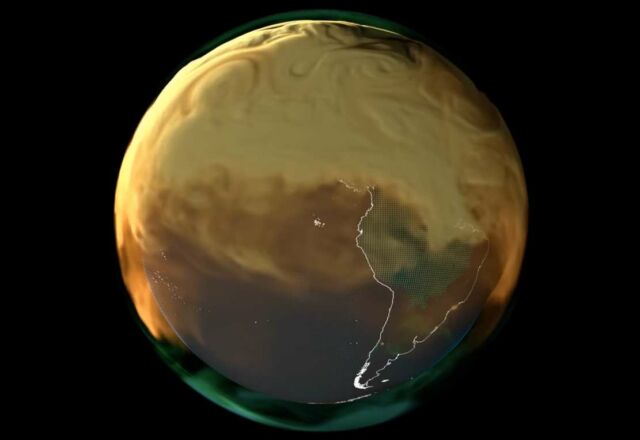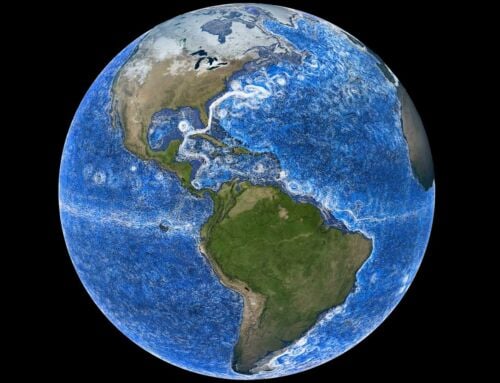
Carbon dioxide (CO2) is the most prevalent greenhouse gas driving global climate change.
However, its increase in the atmosphere would be even more rapid without land and ocean carbon sinks, which collectively absorb about half of human emissions every year.
Advanced computer modeling techniques in NASA’s Global Modeling and Assimilation Office allow us to disentangle the influences of sources and sinks and to better understand where carbon is coming from and going.
This visualization shows the CO2 being added to Earth’s atmosphere over the course of the year 2021, split into four major contributors: fossil fuels in orange, burning biomass in red, land ecosystems in green, and the ocean in blue. The dots on the surface also show how atmospheric carbon dioxide is also being absorbed by land ecosystems in green and the ocean in blue.





Leave A Comment